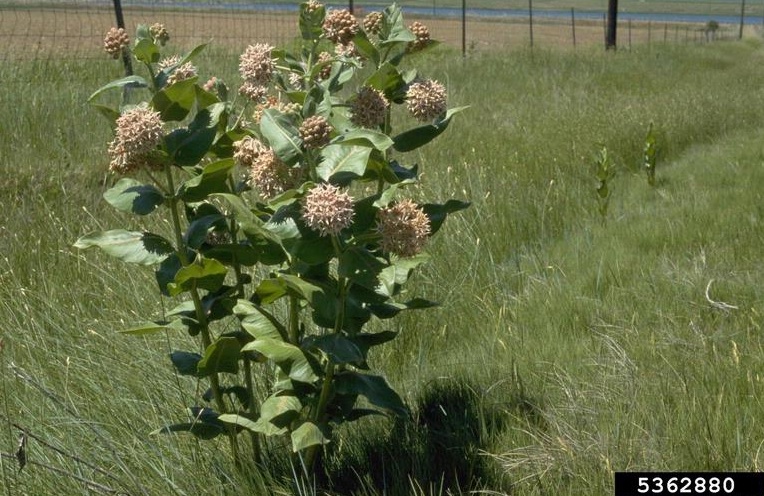May is a great month to enjoy the outdoors. Typically, the weather has warmed up enough we can enjoy being outside again after a long, cold winter. Many of our plants are becoming more and more active with many blooming and our vegetable gardens will begin soon. For May I have chosen a plant that is not only a native wildflower, but it is a plant that is great for the monarch migration that should also begin to move through Nebraska sometime in May, Common Milkweed.
Yes, many people view common milkweed as a weedy plant species, but it is a great native wildflower for any low maintenance area of your landscape.
Milkweed & Monarchs
Milkweed is a great addition to any landscape for pollinators. Butterflies, especially Monarch's, use milkweed to lay their eggs on and then the developing larvae will feed on the milkweed plants. According to the USDA plants database, milkweed plants are the only plants that larvae will feed on so they can develop into a chrysalis and eventually butterfly. Monarch populations are declining, so anytime we can use a plant that may help lead to an increase in population would be great.
Common vs. Butterfly Milkweed
Common milkweed, Asclepias syriaca, is a member of the milkweed family, so it has a milky sap. The small flowers are held in a large cluster and they are light pink to rose colored. The seeds are held in a follicle on the plant that splits open when mature. The individual seeds all have silky hairs attached to them to help the seeds move with the wind. The leaves are opposite, oblong, and can be 10-25 cm long and 4-12 cm wide with a rounded leaf tip.
If you do not like common milkweed, another good choice would be butterfly milkweed. It is more accepted as a landscape plant. Butterfly milkweed, Asclepias tuberosa, has small flowers that are attractive to butterflies in the colors of orange, yellow-orange, red-orange, and pastel orange.
All milkweeds have seeds attached to tuft of silky hair that is carried by the wind, which can move the plant around to other areas of your landscape. Common milkweed naturalizes much more easily than butterfly milkweed, but in a low maintenance area, such as a fenceline, windbreak, prairie or wildflower planting that may be OK. They are an easy plant to grow for color and to provide habitat for butterflies. And honestly you don't even really need to "plant" them. Just let wild plants grow instead of pulling them out when they appear in low maintenance areas of your landscape.
Undesirable plants in a lawn or formal landscape can easily be mowed over for control.
Growing Milkweeds
Milkweed is very easy to care for, which means it can grow with little care. It prefers full sun to part shade and average to dry soils. Butterfly milkweed will only tolerate very light shade.
Milkweed plants were used in the past by many Native American tribes for many reasons. According to the USDA plants database, Cherokee Indians have used Common milkweed for backaches, to remove warts, for ringworm and for bee stings. However, all milkweeds are poisonous to humans and livestock, so they should not be eaten by us today.
Common milkweed, if used in the correct location, can be a great addition to your landscape. But if common milkweed is a little too "weedy" for you, consider adding butterfly milkweed in your perennial gardens.


